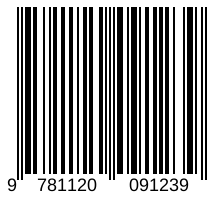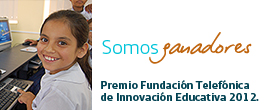Do you know that there are many endangered animals all over the world? What's that? Endangered animals are animals in danger of extinction. An animal is considered endangered when there are very few of them alive. In the history of our planet lots of cretaures have disappeared, such as dinosaurs. During the age of dinosaurs,... Seguir lendo →
Emails from London
Before going on Christmas holiday, here you have the last final task for my 6th Graders. Now, their task is writing an email. Click on the picture to know what you have to do.
I can see a rainbow too!!
Spring is the perfect time of year to teach children about the rainbow. A primavera é o momento perfecto do ano para falarlles aos cativos do arco da vella. So last Monday, Miss Spring came to our classroom and told us that a long time ago, people thought rainbows were magical bridges across the sky... Seguir lendo →
Butterfly life cycle wheels
Butterfly life cycle wheels provide a wonderful visual demonstration to help kids explain how a caterpillar turns into a butterfly.All you'll need is a white paper plate, a coloring sheet of the butterfly life cycle, crayons, glue and scissors.After teaching my children about the 4 different stages in the butterfly’s life cycle, they colored all of the stages.... Seguir lendo →
Egg carton caterpillars
We continue working on insects in a fun way. I started this activity by having children watch "The very hungry caterpillar" film. It was fantastic to see how interested my kids got watching the film version of this Eric Carle's book. They liked it so much that I had to read them the story each... Seguir lendo →
Insects in KIndergarten
Insects are very strange creatures but not all bugs are insects.During these two last weeks my kindergarteners explored the complex world of insects and this is what they have discovered. Os insectos son criaturas moi raras pero non todos os bichos son insectos. Durante estas dúas últimas semanas os pequechos exploraron o complexo mundo dos... Seguir lendo →
Parts of plants: a task in Kindergarten
Como xa sabedes, este ano en infantil deixamos de traballar cos libros de texto e apostamos polo traballo con proxectos. Decidimos comezar con algo que os nenos xa coñecen como son as estacións e empregar o inglés para coñecer o mundo que nos rodea. Este trimestre é o momento de traballar coa primavera e todo... Seguir lendo →
Mr. Winter film
Here you have our new video based on our tale " Mr. Winter ". Enjoy it!!! Mr. Winter from María Abilleira Pomar on Vimeo. After watching this video, my 5-years-old children drew Mr. Winter. They're great!!!
Dingle Dangle Scarecrow
As you know, we are working on a European project about ABCs. This term my students have to learn words related to Autumn and spell them. A scarecrow is one of the things Autumn see in our tale. With this cute song, children can learn some action in a fun way. We'll also use our... Seguir lendo →
AUTUMN, AUTUMN. WHAT DO YOU SEE?
In Autumn there are many interesting things to discover. Can you see them? Let’s ask the Autumn what it sees. No outono hay moitas cousas interesantes para descubrir. Podedes ollalas? Preguntémoslle ao outono que é o que el ve. Autumn tale from mariaabilleira
Proxecto Colaborativo Libro Virtual Gloria Fuertes
Comezamos o curso coas pilas ben cargadas gracias á concesión do 1º Premio Internacional en Innovación Educativa (Mod. D) polo Proxecto Colaborativo Libro Virtual Federico García Lorca da Fundación Telefónica. Por iso os profes do cole tomamos a decisión de participar no novo libro virtual que lidera Lourdes Giraldo sobre a poeta dos rapaces Gloria... Seguir lendo →
Preschool Projects 2011-12
Here you have the projects my preschoolers made during this school year. I'm so proud of them. Click on the pictures to take a look at our works. Clicade no debuxo para mirar os nosos traballos.




























